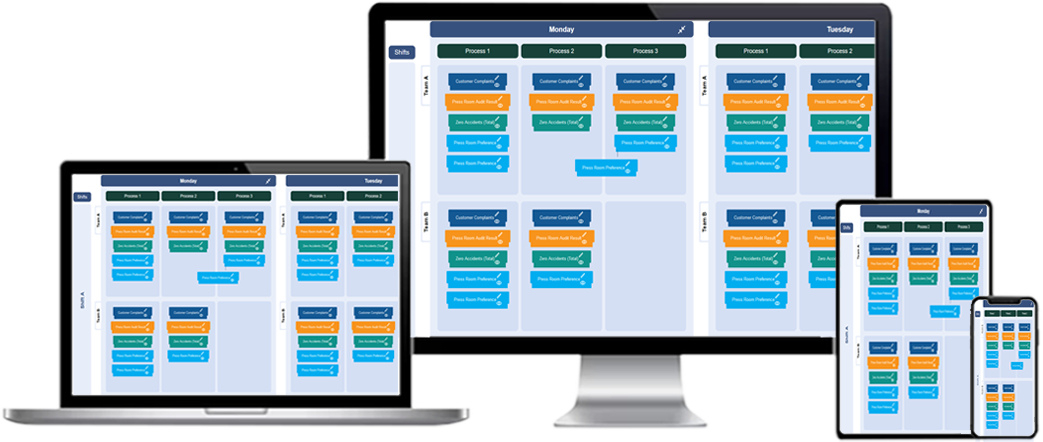In today’s fast-paced work environment, businesses require efficient tools to streamline workflows and enhance productivity. A Digital T Card Board is an advanced solution designed to improve task management, coordination, and workflow transparency. By transitioning from traditional physical T Cards to a digital platform, organizations can achieve greater flexibility, real-time updates, and seamless collaboration.

What is a Digital T Card Board?
A Digital T Card Board is an electronic version of the traditional T Card system used for tracking tasks, jobs, or processes. It provides a structured, visual representation of tasks, allowing teams to easily assign, monitor, and update work in progress. Unlike physical T Cards, digital boards offer dynamic features such as real-time updates, automated notifications, and integration with other workflow management systems.
Key Benefits of a Digital T Card Board
Implementing a Digital T Card Board offers several advantages:
- Real-Time Visibility: Team members can instantly see task statuses, reducing delays and miscommunication.
- Enhanced Collaboration: Multiple users can access and update the board simultaneously, improving teamwork and coordination.
- Automated Task Tracking: Eliminates the need for manual updates, ensuring accurate and up-to-date information.
- Customizable Workflows: Allows teams to define task stages, priorities, and dependencies to fit specific project needs.
- Data-Driven Insights: Generates reports and analytics to help managers optimize resource allocation and process efficiency.
- Integration Capabilities: Connects with enterprise systems, reducing duplication of effort and improving overall workflow efficiency.
How a Digital T Card Board Supports Agile Workflows
Agile workflows require adaptability, transparency, and efficiency. A Digital T Card Board aligns with Agile principles by enabling teams to:
- Quickly Adapt to Changes: Tasks can be modified, reassigned, or reprioritized in real-time.
- Improve Sprint Planning: Provides a clear overview of work-in-progress, upcoming tasks, and completed activities.
- Enhance Communication: Keeps all team members informed about progress, bottlenecks, and pending approvals.
- Track Performance: Monitors task completion rates and identifies areas for process improvement.
Key Features of a Digital T Card Board
Organizations implementing a Digital T Card Board can take advantage of the following features:
- Drag-and-Drop Functionality: Easily move tasks between different stages for better workflow management.
- Color-Coded Task Categories: Differentiate tasks based on priority, department, or status.
- Automated Notifications: Alerts users when tasks are updated, completed, or require attention.
- Role-Based Access: Control who can view, edit, or assign tasks based on user roles.
- Cloud-Based Accessibility: Enables remote teams to access and manage tasks from any location.
Steps to Implement a Digital T Card Board
Organizations looking to implement a Digital T Card Board should follow these steps:
- Define Workflow Stages: Identify key stages in the process, such as “To Do,” “In Progress,” and “Completed.”
- Configure Task Attributes: Set up task details including priority, due dates, and assigned personnel.
- Train Users: Ensure all team members understand how to use the digital board effectively.
- Monitor and Optimize: Regularly review performance metrics and make adjustments to improve efficiency.
Digital T Card Board: A Smart Solution for Agile Workflows
What is a Digital T Card Board?
A Digital T Card Board is an online task management system that replaces traditional paper T Cards. It provides a visual workflow for tracking tasks, progress, and responsibilities in real time.
How does a Digital T Card Board work?
It organizes tasks into digital cards that move across columns representing different workflow stages, such as To-Do, In Progress, and Completed. Users can update, assign, and monitor tasks seamlessly.
What are the key benefits of using a Digital T Card Board?
Benefits include better task visibility, real-time updates, improved collaboration, automated workflows, and integration with other business tools.
How can a Digital T Card Board improve workflow management?
It enables teams to visualize work progress, identify bottlenecks, set priorities, and ensure tasks are completed on time.
Is a Digital T Card Board suitable for Agile teams?
Yes, Agile teams can use it for sprint planning, backlog management, and real-time task tracking to enhance productivity.
What industries can benefit from a Digital T Card Board?
Industries like manufacturing, healthcare, IT, logistics, and project management use Digital T Card Boards for workflow optimization.
Can a Digital T Card Board integrate with other software?
Yes, most systems support integration with enterprise tools such as ERP, CRM, and scheduling applications.
How does a Digital T Card Board help with task prioritization?
It enables users to categorize tasks based on priority, urgency, or deadline to ensure critical tasks are completed first.
What features should I look for in a Digital T Card Board?
Look for features like drag-and-drop functionality, real-time collaboration, notifications, automation, and analytics.
Can a Digital T Card Board be used for remote team collaboration?
Yes, it allows remote teams to collaborate effectively by updating tasks, assigning responsibilities, and tracking progress from anywhere.
How does a Digital T Card Board enhance real-time tracking?
It provides instant updates, live notifications, and dashboards that reflect task status in real time.
Is a Digital T Card Board customizable for different workflows?
Yes, users can customize columns, labels, and task categories to fit specific workflow needs.
How does automation work in a Digital T Card Board?
Automation helps assign tasks, send reminders, update statuses, and trigger alerts based on predefined rules.
What are the security considerations for a Digital T Card Board?
Security features include role-based access, data encryption, user authentication, and audit logs.
How can a Digital T Card Board support continuous improvement?
By providing data insights, tracking performance trends, and helping teams refine processes, it supports ongoing efficiency improvements.